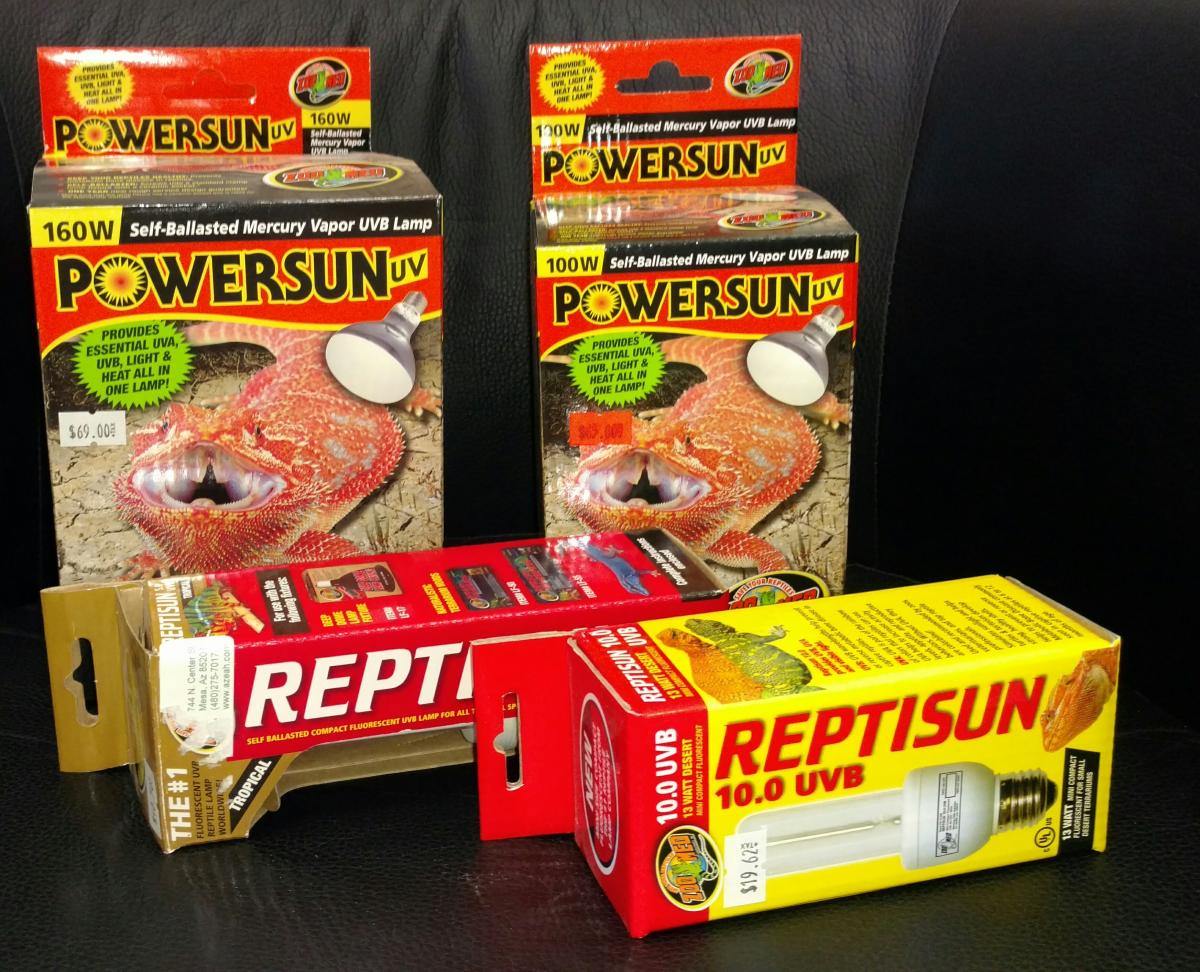Ultraviolet Lighting for Reptiles
 Ultraviolent or UV lighting is a type of light radiation outside of the visible light spectrum found at higher energies than violet light and it is found in 3 forms: A, B, and C. UVA is used by reptiles to regulate their daily biological cycles and rhythms. UVC is damaging radiation that leads to skin damage and cancers. UVB is the most important light for reptiles as it is necessary for many reptiles to properly absorb calcium from their diet in order to utilize it for hardening their bones and other metabolic processes throughout their bodies.
Ultraviolent or UV lighting is a type of light radiation outside of the visible light spectrum found at higher energies than violet light and it is found in 3 forms: A, B, and C. UVA is used by reptiles to regulate their daily biological cycles and rhythms. UVC is damaging radiation that leads to skin damage and cancers. UVB is the most important light for reptiles as it is necessary for many reptiles to properly absorb calcium from their diet in order to utilize it for hardening their bones and other metabolic processes throughout their bodies. UVB works by activating vitamin D precursors in the skin allowing the formation of the active form called Vitamin D3. Vitamin D3 allows for calcium to be absorbed from within the gut into the blood stream. Studies indicate that D3 produced naturally in the body is safer and more effective than D3 provided by oral supplementation in diurnal species (those active during the daytime). Recent studies show that some nocturnal species (those active at night), such as leopard geckos and corn snakes, can also benefit from exposure to UVB lighting.
Reptiles living outdoors get their UVB directly from the sun. UVB cannot pass through normal glass, so placing an indoor reptile near a window will not supply them with the UVB they need. Reptiles housed indoors need to be provided artificial UVB light by the use of special bulbs specifically designed for reptiles.
We recommend Zoo Med brand UVB bulbs. If you are planning on using a fluorescent bulb, use the 10.0 for desert reptiles, tortoises, iguanas, and chameleons and the 5.0 for rainforest and nocturnal reptiles. The Zoo Med Powersun UVB bulb is a mercury vapor bulb that produces both heat and UVB, but should only be used for reptiles living in larger enclosures. When using a fluorescent UVB bulb, make sure your reptile can get within 12-18" of the bulb. Use branches or logs if needed so they can climb closer. Conversely, mercury vapor bulbs produce a large amount of heat, place these bulbs a minimum of 12" away from your reptile's basking spot. Dense screening material can block as much as 50% of the UVB lighting. If your cage has a very dense screen, multiple bulbs may be recommended.
UVB reptile bulbs should be replaced every 6-12 months depending the model, even if they are still producing visible light. UVB bulbs have a coating inside the glass that allows them to emit UVB lighting. This coating wears off after about 6-12 months and the bulb will stop producing the UVB your reptile needs.
Please feel free to ask us if you need further assistance choosing the correct lighting options for your pet.



